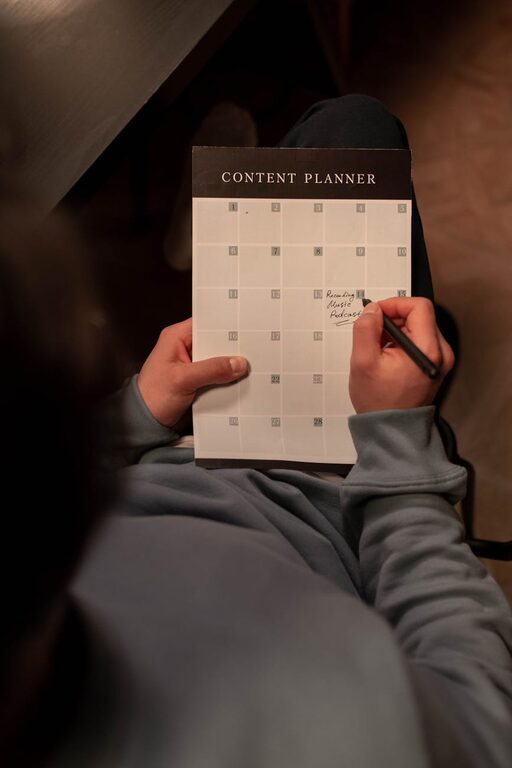Resetting your week with intention can bring balance, calm, and efficiency to your life. A weekly reset routine is a dedicated time to reflect on the past week, organize your priorities, and prepare your mind and environment for the days ahead. If you’re feeling overwhelmed or stuck in a cycle of busyness, establishing a reset routine could be the simple game-changer you need. Here’s how to design a weekly reset routine that works for you.
Why Have a Weekly Reset Routine?
Before diving into the how-to, let’s understand why a weekly reset is valuable:
– Mental clarity: It helps you clear your mind of clutter and stress accumulated over the week.
– Better organization: Resetting your tasks and plans means you’re less likely to forget important commitments.
– Increased motivation: Starting the week fresh can boost your energy and focus.
– Self-care reminder: It creates space to check-in with yourself, ensuring you don’t neglect your well-being.
– Improved productivity: Planning ahead and reviewing progress can help keep your goals on track.
Now, let’s explore the steps to create a personalized weekly reset routine.
Step 1: Choose the Right Time and Day
Consistency is key in forming any habit. Select a day and time that fits your schedule and lifestyle. Many people prefer Sundays or the end of their workweek, but the best time is when you can fully focus without interruptions.
Tips for choosing your reset time:
– Avoid times when you’re typically busy or tired.
– Pick a quiet moment, perhaps in the evening or early morning.
– Set a regular duration, such as 30 minutes to 1 hour.
Step 2: Gather Your Tools
Having the right tools on hand makes the process smoother. Consider these essentials:
– A planner or digital calendar
– A notebook or journal
– Clean workspace
– Your devices (phone, laptop) with access to your task lists or apps
– Any self-care items you want to include (e.g., tea, candles)
Step 3: Reflect on the Past Week
Reflection is the cornerstone of a meaningful reset. Ask yourself:
– What did I accomplish this week?
– What challenges or obstacles did I face?
– Which moments brought me joy or satisfaction?
– Were there tasks or goals left incomplete? Why?
Write down your thoughts honestly. This practice helps you recognize patterns, celebrate wins, and learn from setbacks.
Step 4: Clear Your Physical and Digital Space
A cluttered environment can impact your mental state. Use part of your reset time to tidy up:
– Organize your desk or workspace
– Delete unnecessary files and emails
– Sort your to-do lists and remove outdated items
A clean space provides a fresh canvas for productivity.
Step 5: Review and Update Your Goals
Look over your short- and long-term goals. Break down large tasks into manageable steps for the coming week. Prioritize by urgency and importance, keeping in mind your energy levels and commitments.
Try this goal-setting approach:
– List top 3 priorities for the week.
– Set achievable daily tasks.
– Schedule times in your calendar for focused work or breaks.
Step 6: Plan Your Week Ahead
Create a clear plan that balances work, personal time, and self-care:
– Mark key appointments and deadlines.
– Allocate time for exercise, meals, and relaxation.
– Include time buffers for unexpected tasks.
Using planners or apps like Google Calendar or Trello can help visualize your week and keep you accountable.
Step 7: Incorporate Self-Care Practices
Don’t forget to nurture yourself. Your reset routine should include activities that recharge you:
– Meditation or breathing exercises
– Light stretching or yoga
– Journaling or reading
– Preparing healthy meals or planning them in advance
Even simple rituals can make a big difference in how you feel.
Step 8: Set Intentions and Positive Affirmations
End your reset by setting intentions. What mindset or feelings do you want to carry through the week? Writing positive affirmations can support motivation and resilience.
Examples:
– “I will focus on progress, not perfection.”
– “I prioritize my well-being alongside my work.”
– “I approach challenges with calm and confidence.”
Step 9: Make It Enjoyable and Flexible
Your routine shouldn’t feel like a chore. Personalize it by adding elements you enjoy, such as music, tea, or lighting a candle. Be flexible; life happens, and missing a reset once in a while is okay. The goal is to create a sustainable habit that supports your well-being.
Sample Weekly Reset Routine Outline
– Day & Time: Sunday evening, 6–7 PM
– Tools: Planner, journal, clean desk
– Steps:
- Reflect on last week (10 minutes)
- Tidy workspace and digital files (10 minutes)
- Review/update goals (10 minutes)
- Plan the upcoming week (15 minutes)
- Self-care practice (10 minutes)
- Set intentions and affirmations (5 minutes)
Final Thoughts
Designing a weekly reset routine is a thoughtful way to regain control over your time and energy. By regularly stopping to reflect, organize, and plan, you set yourself up for more productive and fulfilling weeks. Start small, be consistent, and adjust your routine as needed to fit your life. Over time, you’ll likely find that this simple practice brings peace and purpose to your weekly rhythm.
—
If you enjoyed this guide, consider sharing your own reset routine ideas in the comments below!

